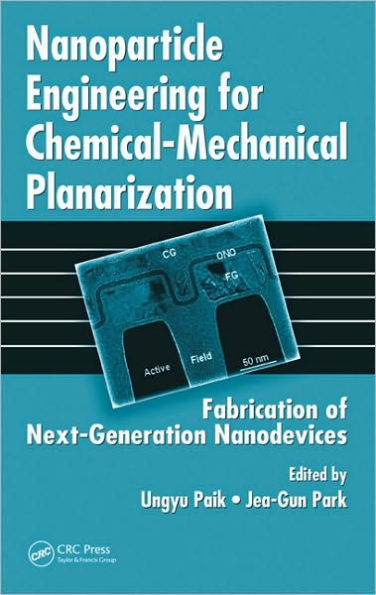Nanoparticle Engineering for Chemical-Mechanical Planarization explains the physicochemical properties of nanoparticles according to each step in the CMP process, including dielectric CMP, shallow trend isolation CMP, metal CMP, poly isolation CMP, and noble metal CMP. The authors provide a detailed guide to nanoparticle engineering of novel CMP slurry for next-generation nanoscale devices below the 60nm design rule. They present design techniques using polymeric additives to improve CMP performance. The final chapter focuses on novel CMP slurry for the application to memory devices beyond 50nm technology.
Most books published on CMP focus on the polishing process, equipment, and cleaning. Even though some of these books may touch on CMP slurries, the methods they cover are confined to conventional slurries and none cover them with the detail required for the development of next-generation devices. With its coverage of fundamental concepts and novel technologies, this book delivers expert insight into CMP for all current and next-generation systems.
Nanoparticle Engineering for Chemical-Mechanical Planarization explains the physicochemical properties of nanoparticles according to each step in the CMP process, including dielectric CMP, shallow trend isolation CMP, metal CMP, poly isolation CMP, and noble metal CMP. The authors provide a detailed guide to nanoparticle engineering of novel CMP slurry for next-generation nanoscale devices below the 60nm design rule. They present design techniques using polymeric additives to improve CMP performance. The final chapter focuses on novel CMP slurry for the application to memory devices beyond 50nm technology.
Most books published on CMP focus on the polishing process, equipment, and cleaning. Even though some of these books may touch on CMP slurries, the methods they cover are confined to conventional slurries and none cover them with the detail required for the development of next-generation devices. With its coverage of fundamental concepts and novel technologies, this book delivers expert insight into CMP for all current and next-generation systems.

Nanoparticle Engineering for Chemical-Mechanical Planarization: Fabrication of Next-Generation Nanodevices
224
Nanoparticle Engineering for Chemical-Mechanical Planarization: Fabrication of Next-Generation Nanodevices
224Hardcover(New Edition)
Related collections and offers

Product Details
| ISBN-13: | 9781420059113 |
|---|---|
| Publisher: | Taylor & Francis |
| Publication date: | 02/20/2009 |
| Edition description: | New Edition |
| Pages: | 224 |
| Product dimensions: | 6.12(w) x 9.19(h) x (d) |
